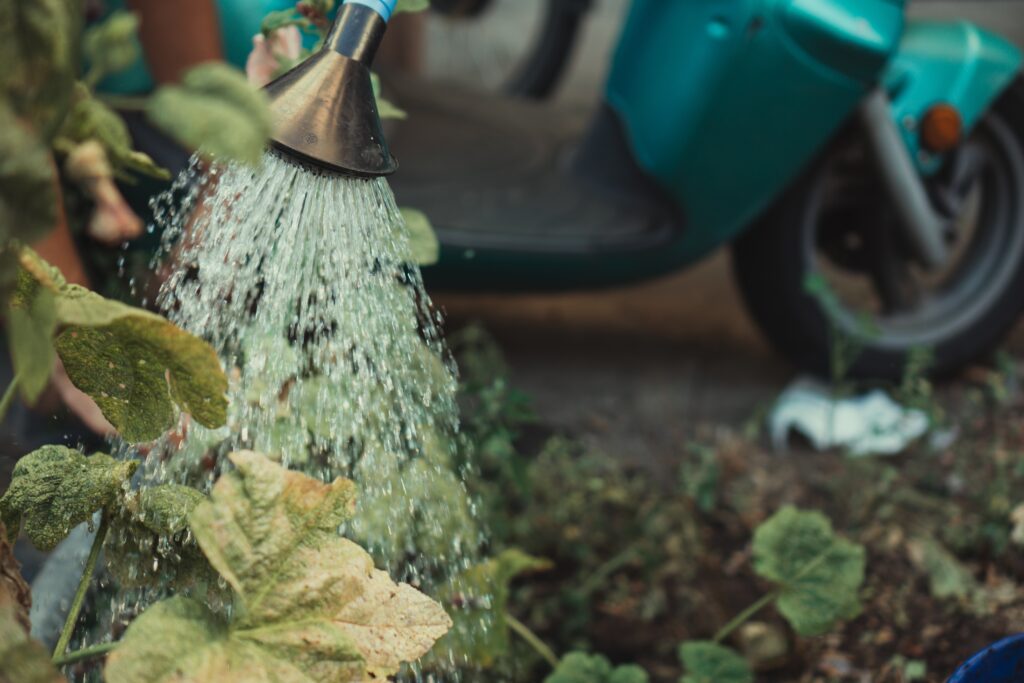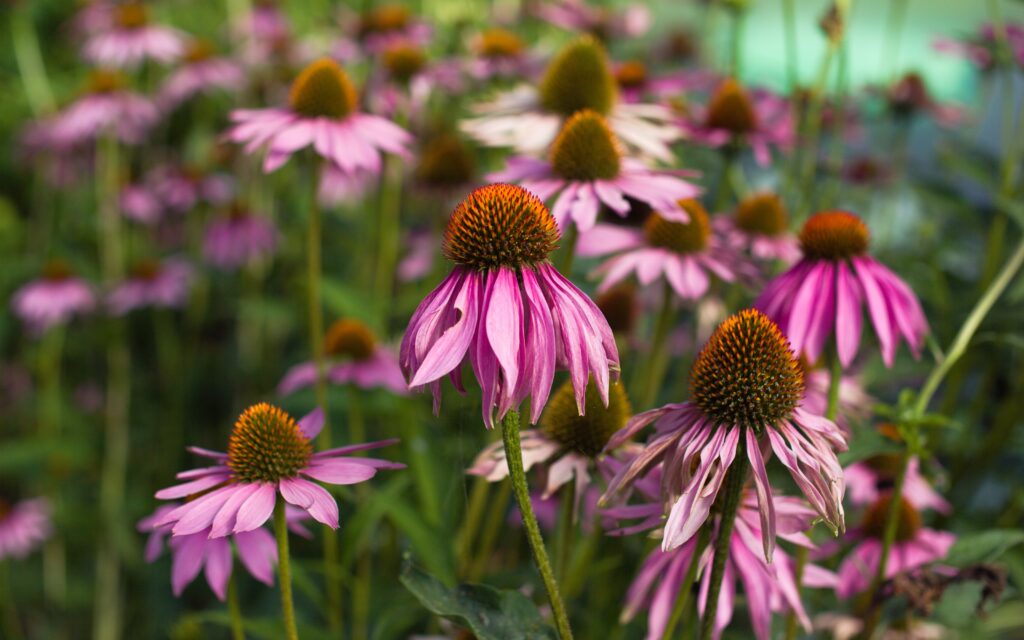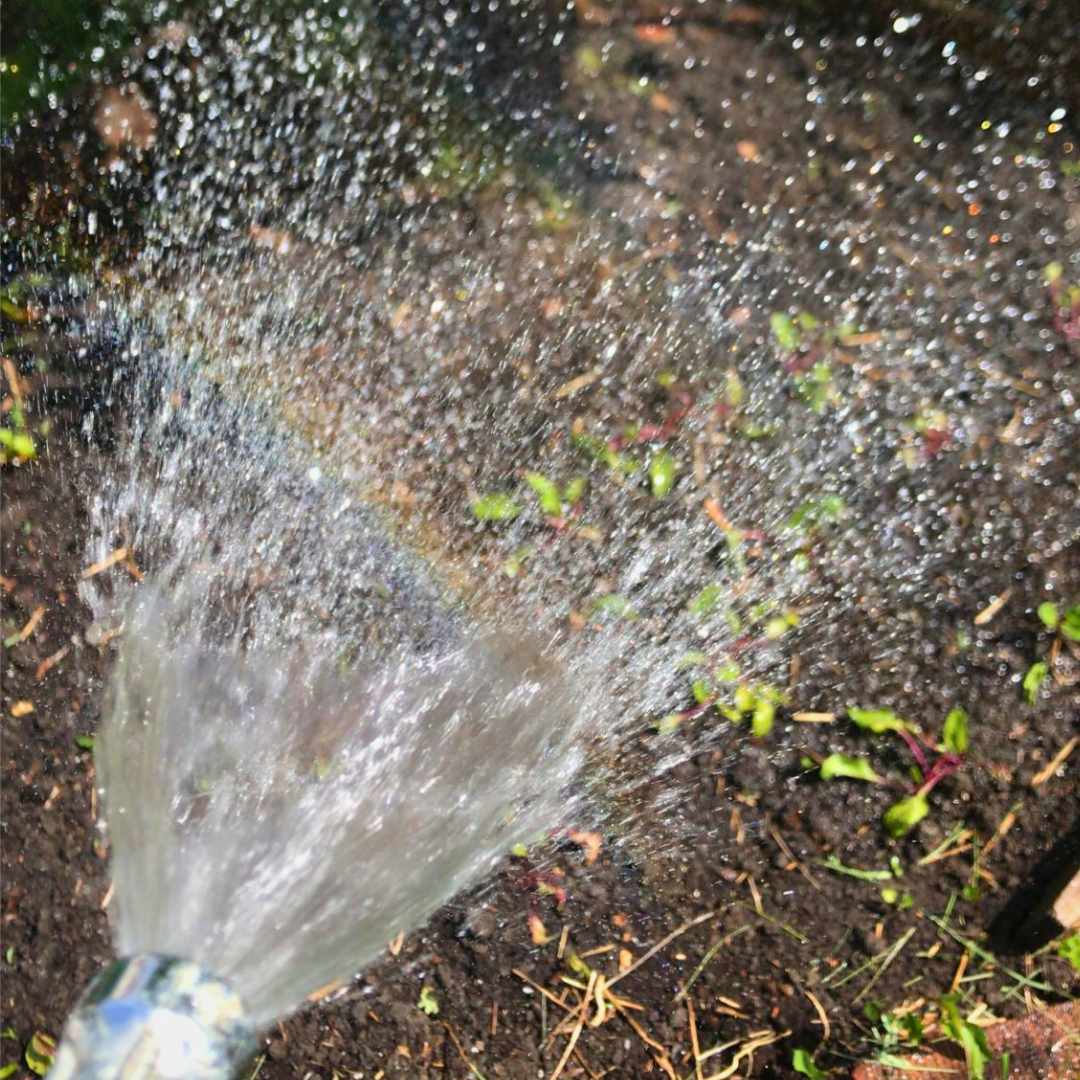
Source: Jonathan Kemper via Unsplash
28/July/2023 by Sophie
The success of your garden heavily relies on how you manage its watering schedule. Questions like how much water to provide and how often to water may seem insignificant, but they have a huge impact on your plant’s growth and productivity. I’ve learned valuable watering tips from friends and neighbours during my gardening adventures, and I’ve encountered some intriguing myths and old wives’ tales, too. In this blog post, I’ll debunk my top five favourite watering myths and share five helpful tips and tricks to ensure your garden thrives this season. By following these insights, you’ll be well-equipped to nurture your plants and enjoy a flourishing garden all year round.
Top 5 Watering Myths
1. One Inch of Water a Week
When I first started gardening, one of the first things I did was go to Google and searched “How much to water a garden”. I noticed that “one inch of water per week” was repeated back to me across multiple sites, but it only confused me further – I mean, how do you even measure the inches of water you’re giving your garden, anyway?
The reality is, plants have varying water needs, and the same principle applies to different types of soil. For instance, sandy soil drains water quickly and dries out rapidly too, while clay-rich soil retains water for much longer periods. Understanding these variations is crucial for effective gardening and ensuring the well-being of your plants.
2. Watering the Leaves Will Burn Them
The idea behind this one is that water droplets on the leaves act as mini magnifying glasses, concentrating the sun’s rays and potentially scorching the leaves. This common piece of advice led a group of researchers to conduct a study on its validity in 2010 at Eötvös University. The researchers found that the magnifying effect is highly unlikely to occur on the smooth surfaces of various plant leaves since the droplets are too close to the leaf to have any significant magnifying effect on the sun’s rays (the researchers also found our that leaf burn was possible on plants with waxy hairs on their leaves, but unless you’re planning on growing floating ferns, you should be good!)
So yes, it’s actually safe to water your plants in the middle of the day. However, I still personally prefer to water the soil rather than the leaves for two reasons: first, I want to reduce the risk of transferring foliar diseases between my plants, and second, to increase the chances of the water reaching the plant’s roots before it evaporates.

Source: Diana Roberts via Unsplash
3. Wilting Plants Mean it’s Time to Water
When plants are thirsty, they may appear wilted, but there are other reasons why they might look tired, too. Wilting happens when a plant is unable to properly deliver water to its leaves and stems. The roots of a plant play a vital role in drinking water and absorbing essential nutrients. Similar to us, plant roots require a balance of both air and water to function correctly. If the roots are damaged, the plant won’t be able to stay hydrated. If there’s too much water, the roots won’t get enough air. And if there’s too much air, they won’t draw in sufficient moisture.
Additionally, things like root diseases, insect damage to the stems and leaves, or physical harm to the plant from things like shovelling too close to the plant’s roots can also impact the way water is distributed within the plant. Understanding these factors can help us better care for our plants and maintain their health.
4. Drought-Tolerant Plants Don’t Need to Be Watered
When I was younger, my mom had echinacea flowers in our front yard, and I thought they were amazing. She hardly ever had to water them, and yet they seemed to come back stronger each season! However, what I didn’t realise back then was that they weren’t always so resilient.
In their first season, drought-tolerant plants are still in the process of establishing their root systems. Whether you start them directly in the garden or plant a container-grown flower, it’s crucial to provide a consistent supply of moisture until their root system becomes more established. If you’re interested in creating a drought-tolerant garden, a quick Google search for “Xeriscape design” can offer plenty of cool ideas to inspire your water-conscious landscaping endeavours.

Source: Marc Pell via Unsplash
5. New Plants Should be Watered Every Day
I know, this myth may appear to contradict the advice in my previous point. However, providing your plants with water regularly doesn’t necessarily mean watering them every day! In reality, overwatering can lead to some significant issues for your plants. Your soil should contain small pockets of air, and if you water too frequently, it can cause the soil to become compacted, which, in turn, encourages shallow root growth. Finding the right balance is key to ensuring your plants receive adequate hydration without risking their overall health.
Top 5 Watering Tips
1. Pay Attention to the Differences in the Water Needs of your Plants
When you’re just starting out, it’s essential to be mindful of the differences in your plants’ water requirements. For instance, your tomatoes will need much more water compared to the well-established mint that has been growing in your garden for years. Additionally, consider the different soil types within your garden. If some areas pool with water after rain, it could indicate more clay in the soil there compared to the rest of your yard. Moreover, weather conditions should also factor into your watering routine. Windy days, for example, are a great predictor of a plants’ water use, meaning it’s best to water them well before.
Another aspect to think about is the stage of your plants’ growth. Seedlings require more frequent watering as their roots have only penetrated the topmost soil layers, which dry out quickly. On the other hand, more mature plants can benefit from less frequent watering, encouraging their roots to grow deeper in search of water. By understanding these factors, you can provide your plants with the right amount of water at the right times and foster their healthy growth.
2. Practise Water-Saving Strategies: Mulch and Timely Watering
Using water conservation strategies can save you time and energy, without having to compromise on the quality of your harvest. Watering at the appropriate time of day, for instance, can make a big difference in the effectiveness of your watering routine. By choosing to water in the early mornings or late afternoons, the water gets more opportunity to soak into the lower layers of soil before the water in the topsoil evaporates. If you use a sprinkler and have busy mornings, setting up a timer for your hose can be a fantastic way to automate your watering schedule and ensure you don’t miss watering days.
To enhance your soil’s water retention, you can apply mulch using organic materials like hay or grass clippings, or whatever you have readily available. Just make sure the mulch is spread evenly to about a ¼ inch thick, and try to avoid using mulch with lots of seeds in it. As an added benefit, mulch contributes to your soil’s long-term health; as it decomposes, the organic matter in your soil increases, further enriching it for healthier plant growth!
3. Opt for Watering your Crops Infrequently and Thoroughly
In the past, I’ve been guilty of watering my plants every morning. It was something I’d like to do before heading to work, and I even tried to be mindful not to overwater them (most of the Lawrence Lowlands, which include Montreal, have soils rich in clay, remnants of the ancient Champlain Sea. Little did I know, however, that my watering schedule was unintentionally pampering my plants.
If they could easily access all the water they needed from the topsoil, why would they bother growing their roots deeper? As a result, my plants developed a lot of roots that grew sideways in the topsoil instead of downwards, leading to competition for space among neighbouring plants. By adjusting my watering practices to be thorough but less frequent, I’m now watering my garden to encourage deep root growth. This approach fosters stronger and healthier plant development.
4. Use a Hose Nozzle when Watering with a Hose
Soil compaction is a big deal, and just like excessive water can harm your plants, insufficient air can also lead to problems. Ideally, your soil should contain a balanced ratio of 1/4 air and 1/4 water. If you use a hose for watering, the force of the stream can compact the soil, and the sudden deluge can compress those valuable air pockets, resulting in a denser, more waterlogged soil than the one you began with, and preventing the soil from getting sufficiently hydrated. To avoid compacting your soil too much, I recommend using a nozzle with a rain-like stream, a sprinkler, or micro-irrigation to water your garden gently and avoid potential soil issues.

Source: Giorgio Trovato via Unsplash
5. Perform Soil Finger Tests Often
The best way to figure out if your plant needs watering is not by observing the plant itself, but by using a technique that is similar to testing a cupcake with a toothpick to see if it’s fully baked, called the “Soil Finger Test”. To check the moisture levels in the soil, simply stick your finger into the soil around your plant and then take it out. If soil sticks to your finger, it means there’s still enough moisture in the topsoil for your plants. During the middle of the season, you might want to dig a bit deeper to see if there’s soil around where your plant’s roots should be. Conducting these soil finger tests before watering helps you determine the soil’s moisture levels and prevents you from overwatering your plants.
Watering might feel like a chore at times, but it can also be enjoyable! Understanding how your plants’ needs evolve throughout the season is a great way to feel more connected to them. And if you’ve been taken in by any of these garden myths, don’t worry, I’ve fallen for them too – that’s why they made it to my top 5 favorites. So, what have you discovered on your gardening journey so far? If you know of any watering myths I haven’t discussed, feel free to share them in the comments
